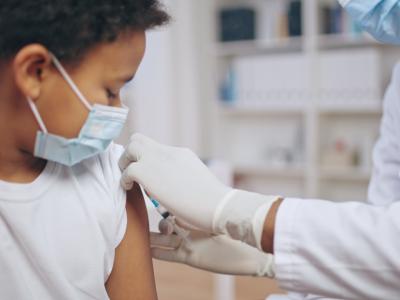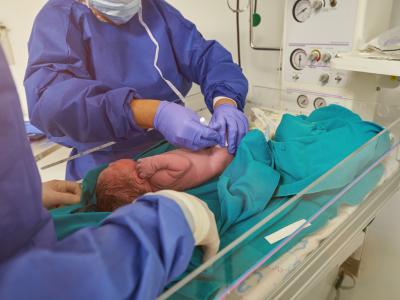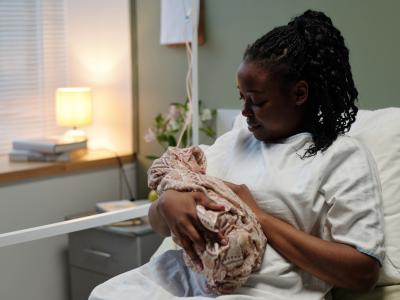State Republican majority tied to higher COVID death rates after vaccine rollout
After the COVID-19 vaccine rollout to adults, Americans living in states with Republican-controlled governments were at an 11% higher risk of COVID-19 death than those in Democrat-led states, and residents of right-leaning states had a 26% higher death rate than those in states with a left-leaning voter majority.
The observational findings were published yesterday in The Lancet Regional Health.
Harvard investigators analyzed age-standardized COVID-19 death rates and local intensive care unit (ICU) patient loads for all 435 US Congressional districts after the vaccine rollout from April 2021 to March 2022, while controlling for sociodemographic factors, population density, COVID-19 vaccination rates, rates of diabetes and obesity, and voter political lean.
The team determined political majorities by evaluating each elected representative and senator's overall and COVID-19 voting records, state trifecta status (governor, state House of Representatives, and state Senate all under the control of one political party), and voter political leaning using records from the 2016 and 2020 presidential elections.
Most (75%) state representatives voted in favor of all four COVID-19 relief bills. Forty-one percent of representatives were in states with Republican trifectas, while 35% had Democratic trifectas, and 25% had divided governments.
Republican trifecta and right voter lean were independently tied to respective 11% and 26% higher COVID-19 death rates, and US senator voting records were significantly and independently linked to an increase of 3.5 percentage points in ICU occupancy. Low COVID-19 relief bill support was also associated with higher death rates. The patterns remained throughout the study period, which included the Delta and Omicron variant waves.
The authors noted that federal and state officials play key roles in obtaining and allocating COVID-19 resources and in setting norms of institutional and social behavior via their actions, campaign messages, and constituent messages.
"Especially in a time of increasingly polarized politics, it is critically important to monitor and analyze population health data mapped onto meaningful units of political geography in conjunction with informative political variables that can aid ascertainment of political accountability and democratic governance," they wrote.
Oct 31 Lancet Public Health study
Study suggests good outcomes in 6 months after prenatal COVID infection
A new study in Pediatrics shows generally good outcomes during the first 6 months of life among infants born to women who had a COVID-19 infection during pregnancy.
This reassuring finding suggests maternal-to-newborn infections are rare when maternal infections occur in the 14 or fewer days before birth. Previous studies have shown that maternal COVID-19 infections are associated with increased preterm birth and stillbirth risk and may be associated with preeclampsia, or potentially dangerous high blood pressure during pregnancy.
The study was conducted on maternal-infant pairs who followed for 6 months before Mar 1, 2022, in 10 jurisdictions, including the city of Houston (Texas), the territory of Puerto Rico, and the states of Kansas, Minnesota, Nebraska, New Jersey, New York (excluding New York City), South Carolina, Tennessee, and Washington.
Most reported maternal infections occurred at 20 weeks gestation or later (73.3% [95% confidence interval [CI], 69.6 to 76.9]). Nearly one-half of maternal records (43.3% [95% CI, 39.7 to 46.8]) had insufficient information to define COVID-19 illness severity, 16.8% (95% CI, 13.7 to 19.9) had an asymptomatic infection, and illness was mild in 29.7% (95% CI, 26.2 to 33.3), moderate to severe in 8.6% (95% CI, 7.2 to 10.1), and critical in 1.6% (95% CI, 1.1 to 2.0).
More than 85.6% of infants who experienced maternal prenatal infection were born at term (37 or more weeks), and (96.7% [95% CI, 95.8 to 97.7]) had no birth defect diagnosis through 6 months of age
"Only 0.6% (0.5–0.7) of infants included in the study tested positive, 10.2% (9.2–11.3) tested negative, and 89.1% (88.0–90.3) were not known to be tested for COVID-19 in the late postnatal period (15 days to 6 months of age)," the authors wrote.
"The incidence of SARS-CoV-2 infections in the early postnatal period was higher when maternal infection occurred in the 14 days preceding delivery, and most infant infections occurred between 15 days and 6 months of age. Breastmilk feeding initiation was lower when maternal infection occurred in the 14 days preceding delivery and all-cause mortality was higher," the authors concluded.
Nov 1 Pediatrics study











